If you've decided to make the Tip the Balance Bathroom Scale, you won't find instructions here! (If you insist on making it, you can find the code here.) This post, on the other hand, will tell you how to make a working bathroom scale.
List of recommended components
- ESP8266 microcontroller - I recommend the wemos D1 mini - about $2
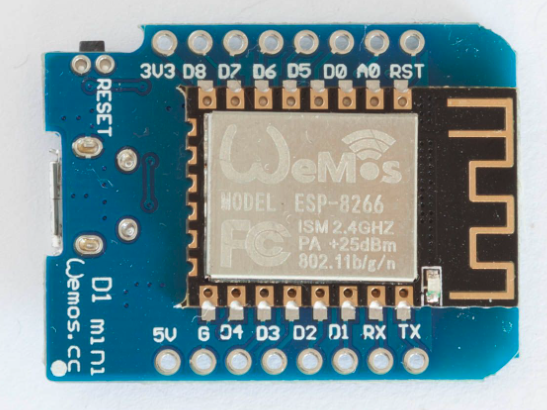
- Four generic 50 kg load sensors with HX711 Module - about $3 for the entire set.
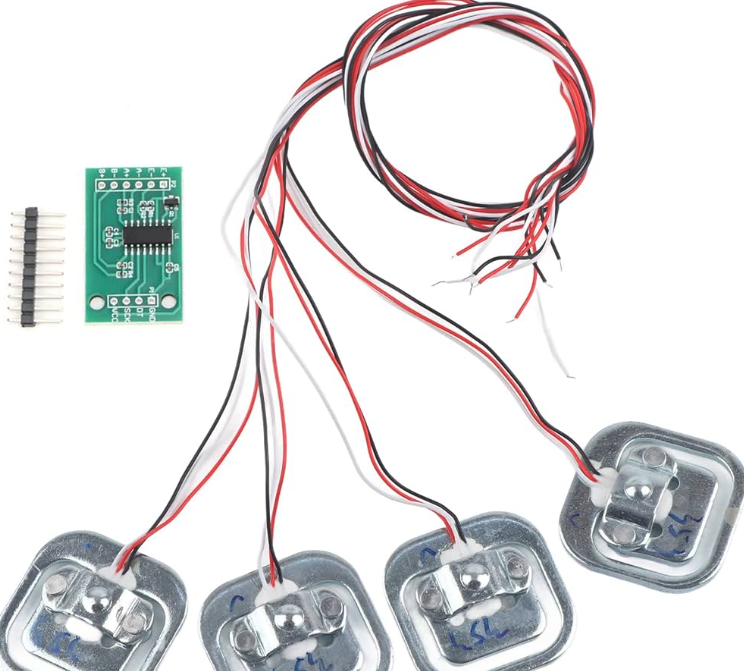
- 16 x 2 LCD screen with I2C adapter. $2
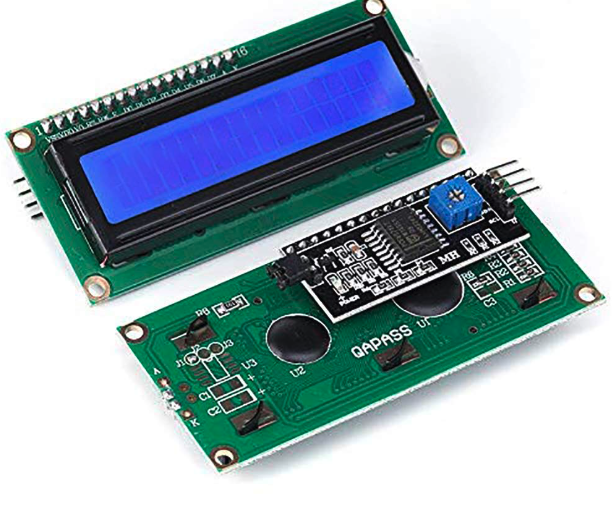
- A base of wood or equivalent, about a 30cm (1 ft) square.
- Access to a 3d printer.
Putting it all together
The hardest part of the build is constructing an assembly that allows the load sensor free movement under the base of the scale. To do this I used this frame produced by ThomDietrich.
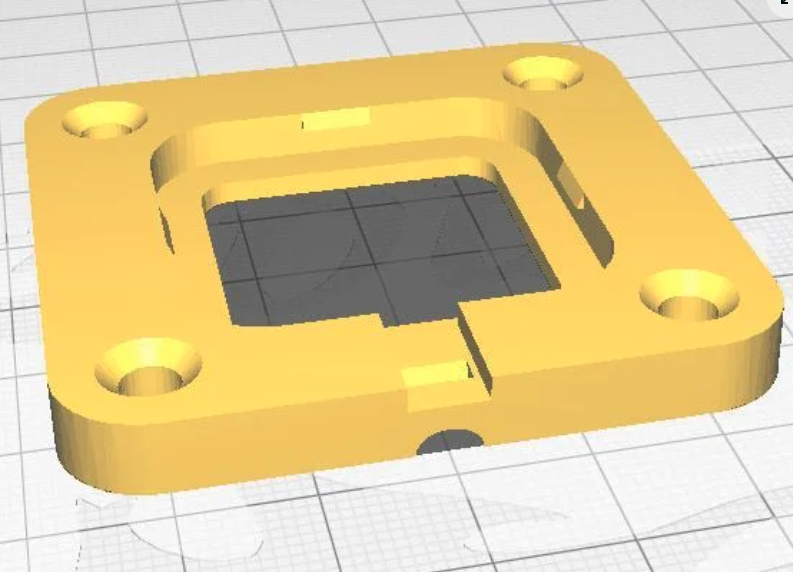
To that I added my own parts that are available on onshape at this link, and this one.
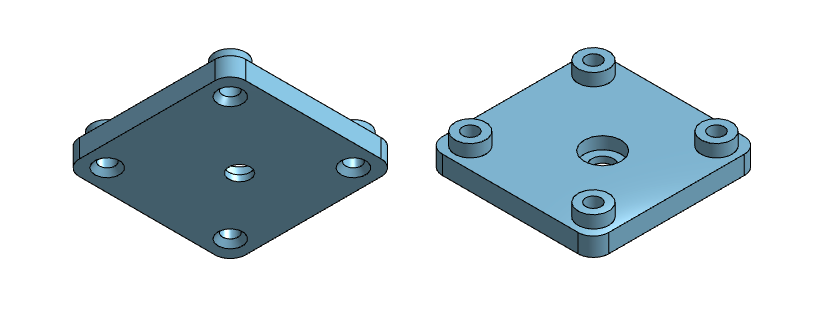
When placed together, they form a solid foundation that allows pressure to be placed evenly over the load sensors.
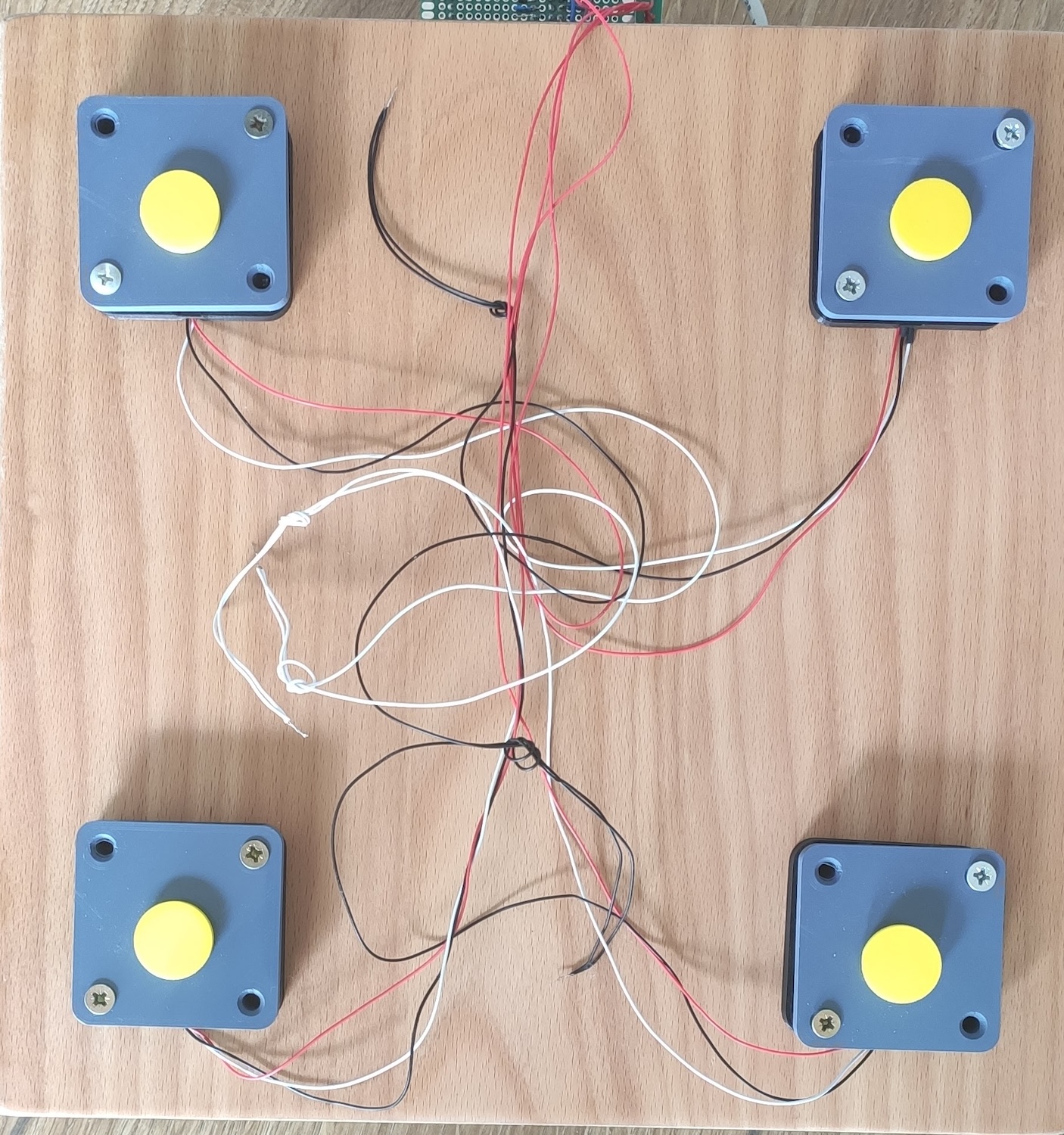
Wiring
Load Sensors
Each of the four load sensors has three wires, usually black, red and white. Black and red are usually 5v and GND - and should be connected in a loop to the 5v and GND pins on the wemos D1 mini. The white wire of each of the sensor is connected to one of the pins of the HX711. (For more details, see Sparkfun instructions here.)
The HX711 connects to the Arduino with only four pins. Naturally, 5v and GND go where you expect, and in my code below you'll see that the Data Pin (OUT) connects to wemos pin 0, and the Clock Pin (CLK) to pin 2. (See this pinout.)
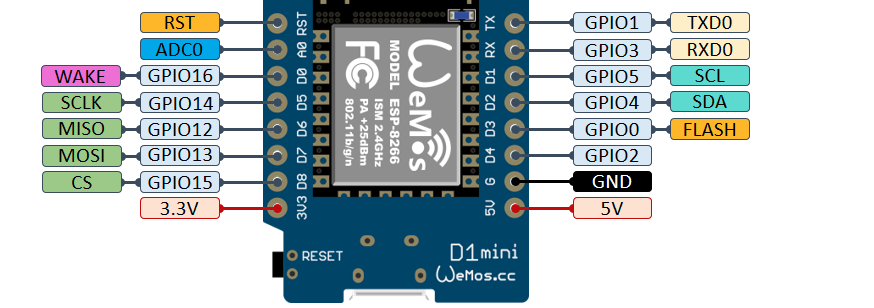
The LCD Screen
The screen has four wires emerging from the I2C adapter on the back. 5v and GND go to the usual places. SCL goes to GPIO5 on the wemos, and SDA connects to GPIO4. (See pinout below.)
The Wemos Code
I need to alert you to three things:
- This is the code that will allow you to weigh yourself. The device works as a regular bathroom scale.
- I have never formally studied coding. I generally pluck bits of code from other projects and fiddle with it until it does what I want it to do. Thus, the code below, is probably appalling. If anyone wants to volunteer to tidy it up, I'll be the first to accept.
- The code defines the ESP32, yet it works on the wemos D1 mini. It's not a mistake.
#include "HX711.h" // library to read load sensors
#include <LiquidCrystal_I2C.h> // Library for LCD screen
LiquidCrystal_I2C lcd(0x27, 16, 2);
#define calibration_factor 23000.0
#define LOADCELL_DOUT_PIN 0
#define LOADCELL_SCK_PIN 2
HX711 scale;
// Code to set up web page on ESP
#ifdef ESP32
#include <Arduino.h>
#include <WiFi.h>
#include <AsyncTCP.h>
#else
#include <ESP8266WiFi.h>
#include <ESPAsyncTCP.h>
#endif
#include <ESPAsyncWebServer.h>
AsyncWebServer server(80);
const char* ssid = "your_ssid";
const char* password = "your_password";
const char* PARAM_INPUT_1 = "input1";
String inputMessage; // Inputs from the web page
String inputParam;
//Web page that asks for input
const char index_html[] PROGMEM = R"rawliteral(
<!DOCTYPE HTML><html><head>
<title>ESP Input Form</title>
<meta name="viewport" content="width=device-width, initial-scale=1">
</head><body>
<form action="/get">
Desired Weight in Kg: <input type="text" name="input1">
<input type="submit" value="Submit">
</form><br>
</body></html>)rawliteral";
void notFound(AsyncWebServerRequest *request) {
request->send(404, "text/plain", "Not found");
}
void setup() {
Serial.begin(9600);
lcd.init();
lcd.backlight();
// Load cell stuff
scale.begin(LOADCELL_DOUT_PIN, LOADCELL_SCK_PIN);
scale.set_scale(calibration_factor);
scale.tare();
WiFi.mode(WIFI_STA);
WiFi.begin(ssid, password);
if (WiFi.waitForConnectResult() != WL_CONNECTED) {
Serial.println("WiFi Failed!");
return;
}
Serial.println();
Serial.print("IP Address: ");
Serial.println(WiFi.localIP());
server.on("/", HTTP_GET, [](AsyncWebServerRequest *request){
request->send_P(200, "text/html", index_html);
});
server.on("/get", HTTP_GET, [] (AsyncWebServerRequest *request) {
// Remove the String declarations here
if (request->hasParam(PARAM_INPUT_1)) {
inputMessage = request->getParam(PARAM_INPUT_1)->value();
inputParam = PARAM_INPUT_1;
}
else {
inputMessage = "No message sent";
inputParam = "none";
}
Serial.println(inputMessage);
request->send(200, "text/html", "HTTP GET request sent to your ESP on input field ("
+ inputParam + ") with value: " + inputMessage +
"<br><a href=\"/\">Return to Home Page</a>");
});
server.onNotFound(notFound);
server.begin();
}
void loop() {
Serial.print(scale.get_units(), 1);
Serial.print(inputParam + inputMessage + " kg"); // change to lb for pounds
lcd.print(scale.get_units(), 0);
lcd.clear();
lcd.setCursor(6, 0);
lcd.print(inputMessage + " kg"); // change to lb for pounds
delay(2000);
}